Spaetzle holds a special place in my heart.
Although their origins are unclear, I first encountered these Teutonic drop noodles my senior year of college at a new bistro in downtown Ithaca, New York, called Dano’s on Cayuga. Dano’s was a welcome respite from the Ithaca places that catered to the college crowd with cheap drinks and food that was either fried, smothered in melted cheese, or both. At Dano’s, there was butcher paper on the tables, art on the walls, Piaf on the sound system. The ever-changing, hand-written menu included dishes like warm goat cheese salad, brandade of cod, mushroom strudel, goulash, and a breaded smoked pork chop, which came with a side of spaetzle and braised red cabbage.
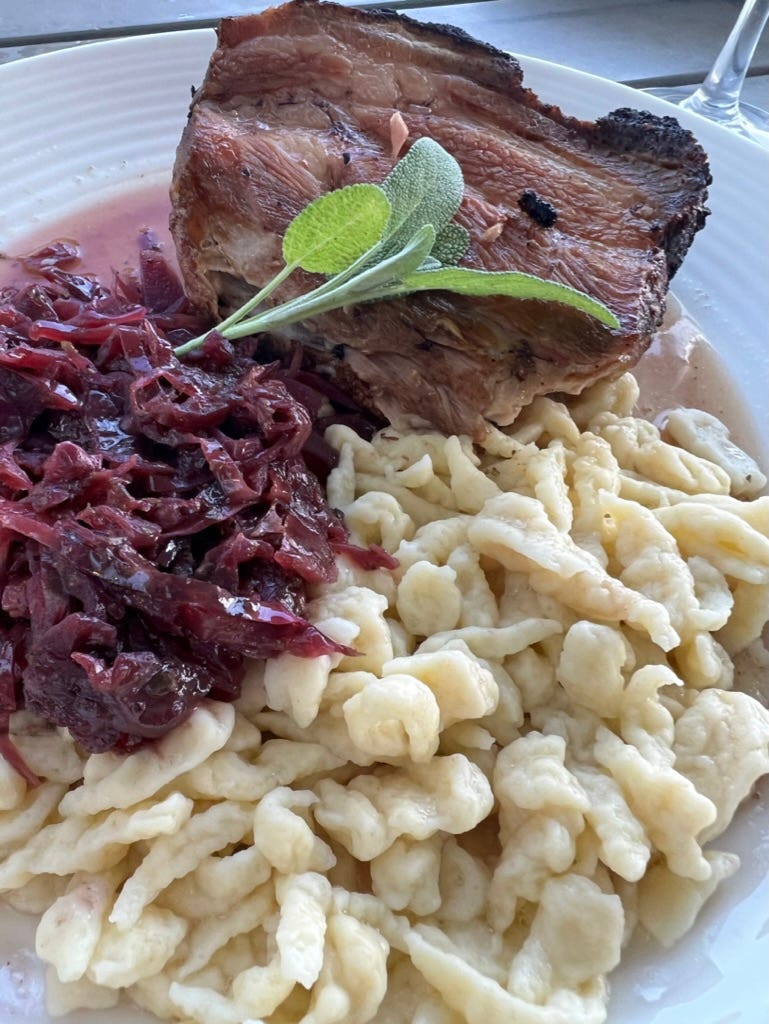
This was the fall of 1990, and even though I had a busy course schedule—needing to make up hotel-school credits after a junior year studying (and eating) abroad in Paris—and had neither free time nor extra money because I was working to pay off tuition and debts, I spent any spare evenings and dollars at Dano’s.
Dano’s was unique, not just for the area. The inflection was Austrian, with all sorts of personal touches. Dano Hutnik, who cooked, and his wife Karen Gilman, who ran the dining room and baked, brought a casual worldliness with them to Ithaca. Dano had been a professional ballet dancer with the Viennese opera, who cooked in the off season. Karen was an artist, a painter, who worked in restaurants to support her passion. They landed in Ithaca on a whim, having seen a classified ad for a restaurant in the newspaper. Over the next decades, they built a business, they raised a family, and they helped make the Finger Lakes a gastronomic destination. We became close friends.
I brought my entire family to Dano’s for graduation, including my grandmother, who found her tafelspitz tough and told Dano so while I tried to hide under the table. I came back to eat there whenever I visited Cornell, often with friends from the city. I featured Dano’s in an issue of Art Culinaire, the hard-cover, quarterly magazine I went to work for after returning from a post-graduate cooking scholarship in Italy. I invited Dano and Karen to cook at the James Beard House when I went to work for the Beard Foundation, and they returned often to Beard’s storied kitchen over the years. When my late friend Michael Ginor, who co-founded Hudson Valley Foie Gras, asked me to co-author a book of foie gras recipes prepared by great chefs from around the world, Dano’s Hungarian whole-roasted foie gras with duck-crackling biscuits was among them.
When Dano and Karen moved from downtown Ithaca to the shores of Seneca lake, building their dream restaurant and home in the middle of wine country, they changed their concept from bistro to heuriger, a Viennese winery restaurant, perfectly tuned to the fine Rieslings and other crisp whites of the region. Savory spreads, a selection of salads, braised pork, goulash, Weiner schnitzel, and spaetzle were among the traditional offerings. It immediately became a favorite meeting point for my family and friends, exactly halfway between NYC and Toronto, where I grew up. Surrounded by local farms, they made their own preserves, mustard, pickles, house-cured meats, and cheese. Nate and I got married at Dano’s in 2012 with 200 loved ones in attendance.
Every time I’ve eaten at Dano’s there has been spaetzle on the table.
Back in 2000, when I was writing my Jewish cookbook, The Mensch Chef, late one night in the original restaurant’s kitchen on Cayuga Street, Dano taught me how to make his spaetzle—eggs, flour, salt. Over the next two decades I made them a handful of times.
But about six months ago, it dawned on me that spaetzle might be a perfect use for sourdough discard, in which I’ve been awash ever since I started regularly baking sourdough bread during the pandemic. I fiddled with Dano’s original recipe, reducing the eggs and flour to accommodate the discard, and presto, perfect, flavorful, light and delicious spaetzle. I’m not sure why it took me so long to think of it. I’ve probably made sourdough spaetzle a dozen times since then.
You can make spaetzle without sourdough discard, which is how Dano made his. But now that I am using my 100% rye cast off, I find the addition of rye flour and buttermilk to the original recipe a welcome enhancement. I give you both options below.
There are many different devices on the market designed to help you make spaetzle. What you need is something you can put over a pot of boiling water with large enough holes to allow the batter to drip through. Spaetzle makers are either rectangular or round. You pour the batter over and then push it through into the boiling water below. A flat grater with large holes will work. A colander with large holes can also work. Some food mills or potato ricers have wide-holed discs you can insert and use to make spaetzle.
Once cooked, which just takes a minute or two, it’s best to transfer the spaetzle directly into ice water to chill. Drained and tossed in some oil, they will keep a few days in the fridge. Dano used to make a large bucket’s worth of spaetzle for service every night. And when we visited he’d often reach in and grab a handful or two to stir into cheesy scrambled eggs for breakfast.
As for what to do with the spaetzle once they are cooked, you use them like any egg noodle. Plain, tossed in some butter, they are perfect as a bed for a rich beef stew or other braised dishes, like paprikash, goulash, or even osso buco. For added flavor and richness, you can toss them in a pan with onions or leeks caramelized in butter. Top them with melted cheese. There’s no limit, really. This summer, more than once, I made a quick sauté with leeks, mushrooms, and fresh corn to which I added fresh spaetzle. They really are easy and delicious.
RECIPE: Sourdough Rye Spaetzle
Makes 4 servings
1/2 teaspoon salt, plus more for the cooking water
2 eggs
1/2 cup rye or wheat sourdough discard
1/2 cup all-purpose or whole-grain flour
Vegetable oil
Bring a large, wide pot of salted water to a boil. Beside it place a large bowl of ice water and have a strainer and your spaetzle-making device at the ready.
In a medium bowl, combine the salt with the two eggs and beat well with a fork. Add the sourdough discard, and mix well. Add the flour and mix to blend. The batter should have the consistency of a thick, gloppy pancake batter.
Once the water comes to a boil, lay a spaetzle maker, flat grater, or colander with large holes over the pot. Spoon a generous dollop of the batter onto the spaetzle maker. Using the spaetzle device, a dough scraper, or a spatula, scrape the dough through the holes into the water. Repeat with the remaining batter. Make sure the batter is dripping into the water and not onto the stove. Remove the maker. As soon as the water comes back to a boil and the spaetzle float to the top, lift them out with a strainer, drain, and place into the ice-water bowl. Drain the cold spaetzle well and place in a bowl if using immediately or in a container to store in the fridge. Toss with a drizzle of some vegetable oil and set aside until needed.
To serve in the simplest manner, melt some butter in a frying pan. Add the spaetzle, season with salt and pepper, and toss to coat and warm through. A little browning is welcome.
RECIPE: Buttermilk Rye Spaetzle
Makes 4 servings
1/2 teaspoon salt, plus more for the cooking water
2 eggs
1/4 cup buttermilk
1/4 cup dark rye flour
1/2 cup all-purpose flour
Vegetable oil
Follow the directions for the sourdough spaetzle, above, adding the buttermilk and rye flour in place of the sourdough starter.
End of an Era
These spaetzle are top of mind because I plan to make them again for the crowd gathering with us next week for Thanksgiving. And Dano’s is top of mind because this weekend Nate and I are traveling to the Finger Lakes for the restaurant’s closing party. I hope spaetzle will be on the menu.
Sadly, despite a robust constitution and bill of good health, Dano died suddenly in 2018. After a day of mushroom hunting and a morning of food prep for a busy Cornell graduation weekend, he didn’t feel well and took himself to the hospital, where he succumbed to sudden cardiac arrest.
Karen has continued to operate the restaurant successfully on her own since his passing, but it hasn’t always been easy, especially through the pandemic and subsequent labor shortage that persists. When required, she’s played chef, baker, host, bartender, dishwasher, owner, and artist.
We felt so lucky that during the pandemic we were able to escape temporarily from the city to a house we rented on Cayuga Lake, a respite. made all the more restorative because it meant we could visit Karen and enjoy the food and atmosphere at Dano’s on a regular basis.
But now, understandably, as Dano’s approaches its 35th year, Karen has decided to retire and devote her time to painting. She has rented the restaurant to a local winery that will use it as a tasting room and event space, so in some ways the notion a distinct form of Finger Lakes gastronomy and hospitality will live on.
In the meantime, Karen is hosting a farewell party as a benefit for José Andrès’s global charity World Central Kitchen. Luckily our friendship, our memories, and our love of spaetzle will live on.



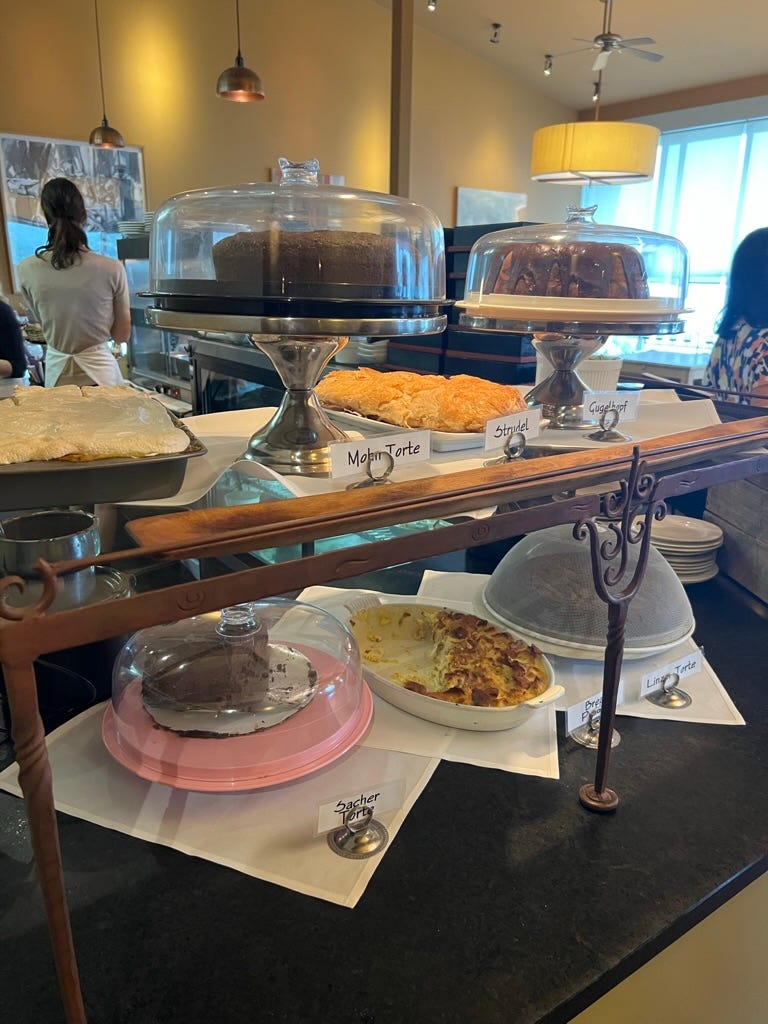
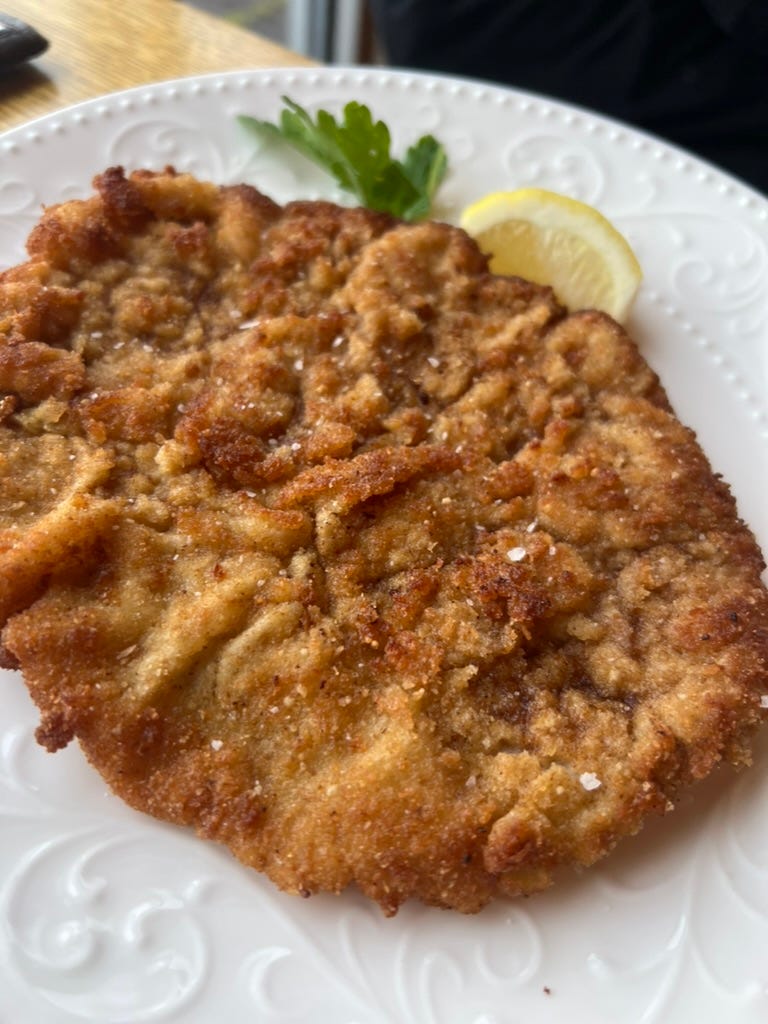
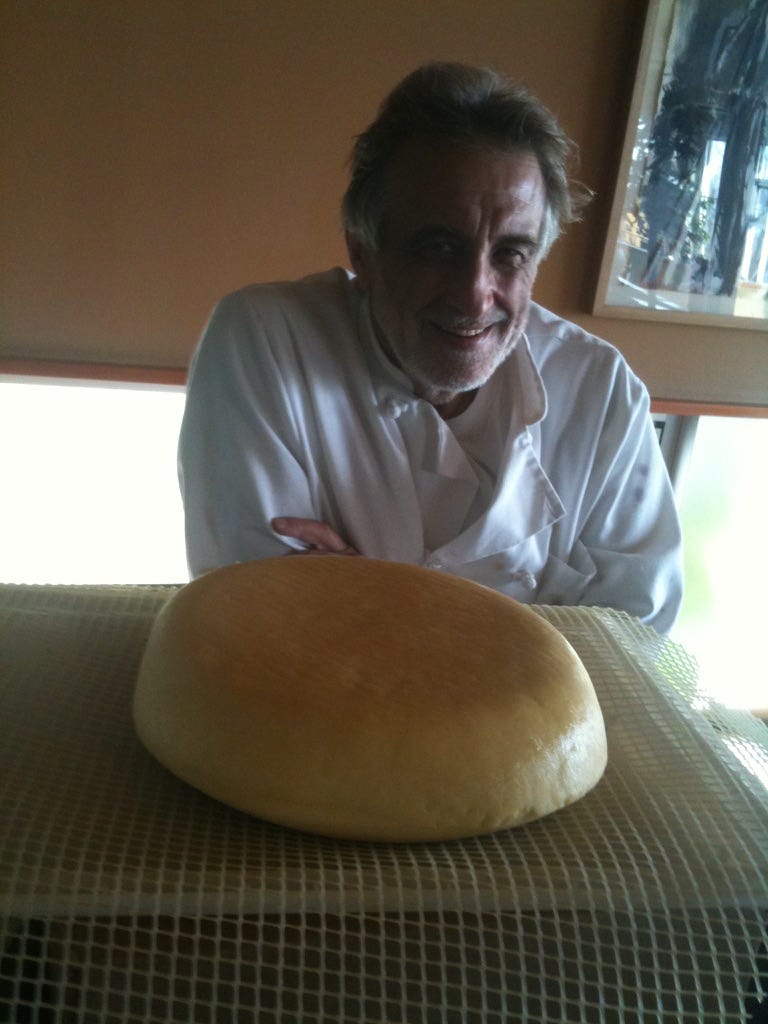

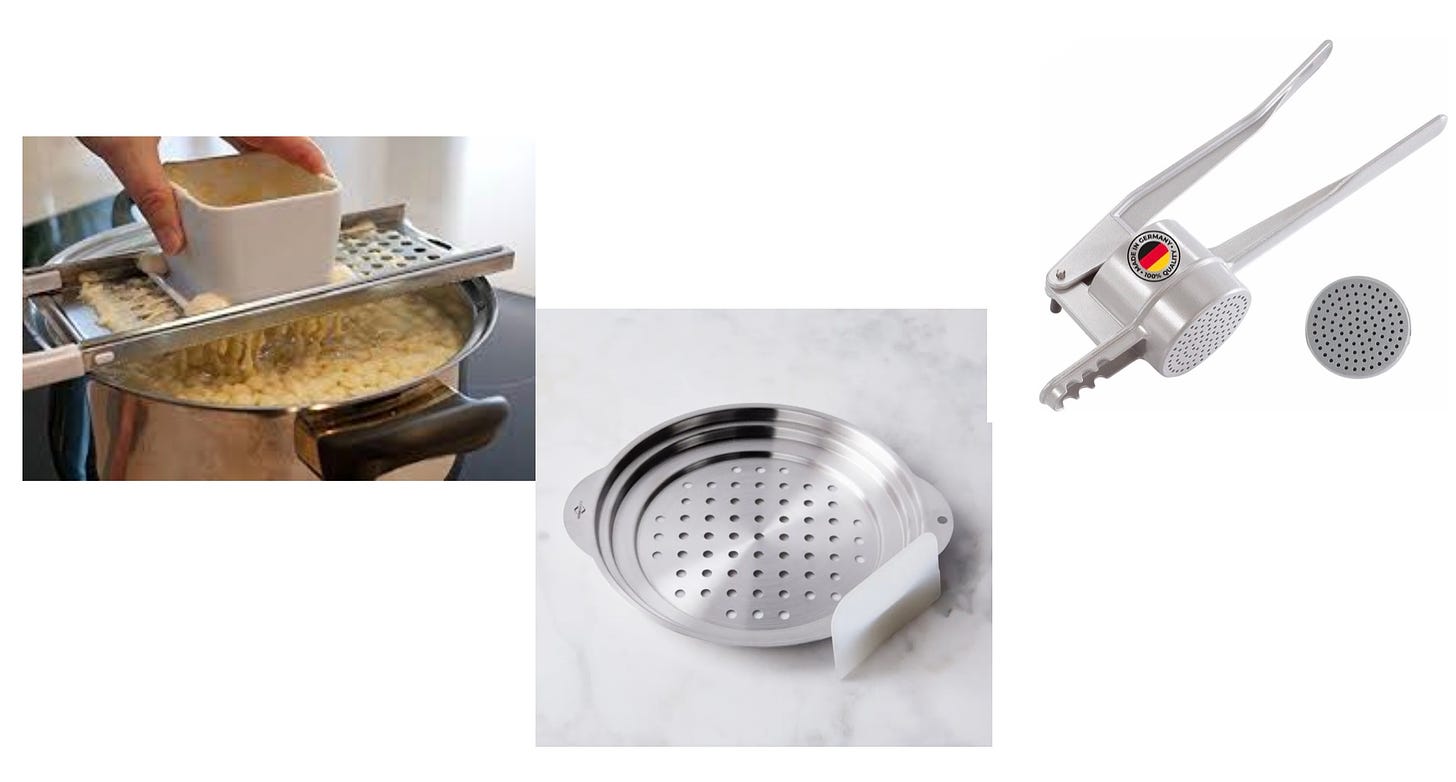


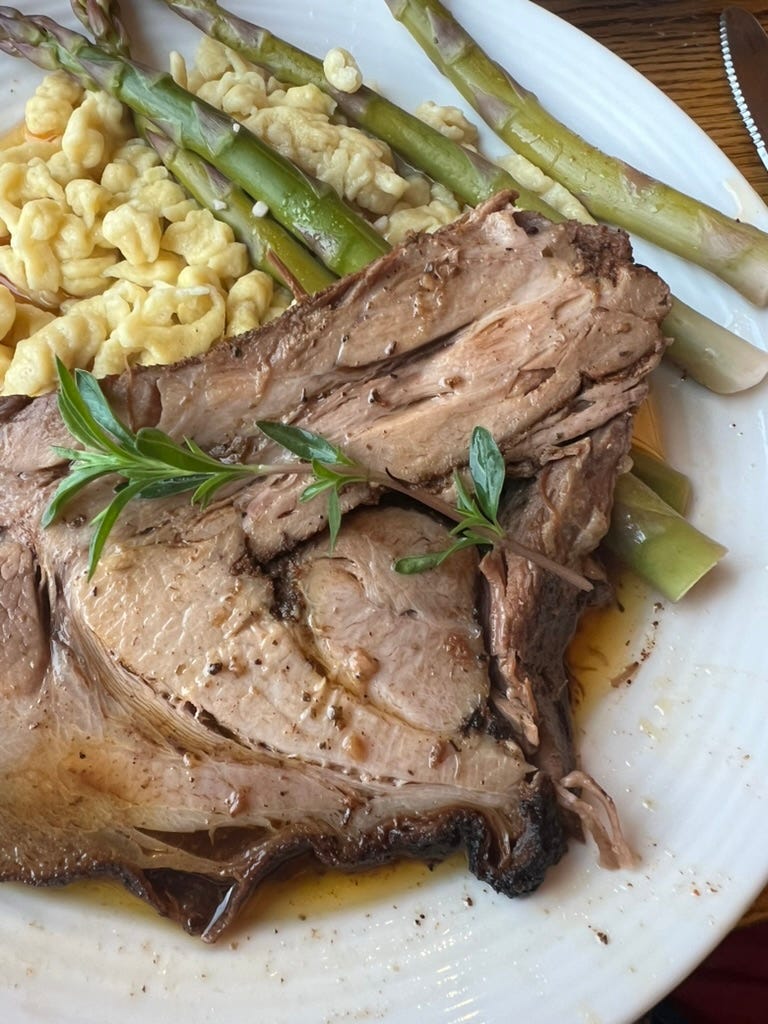
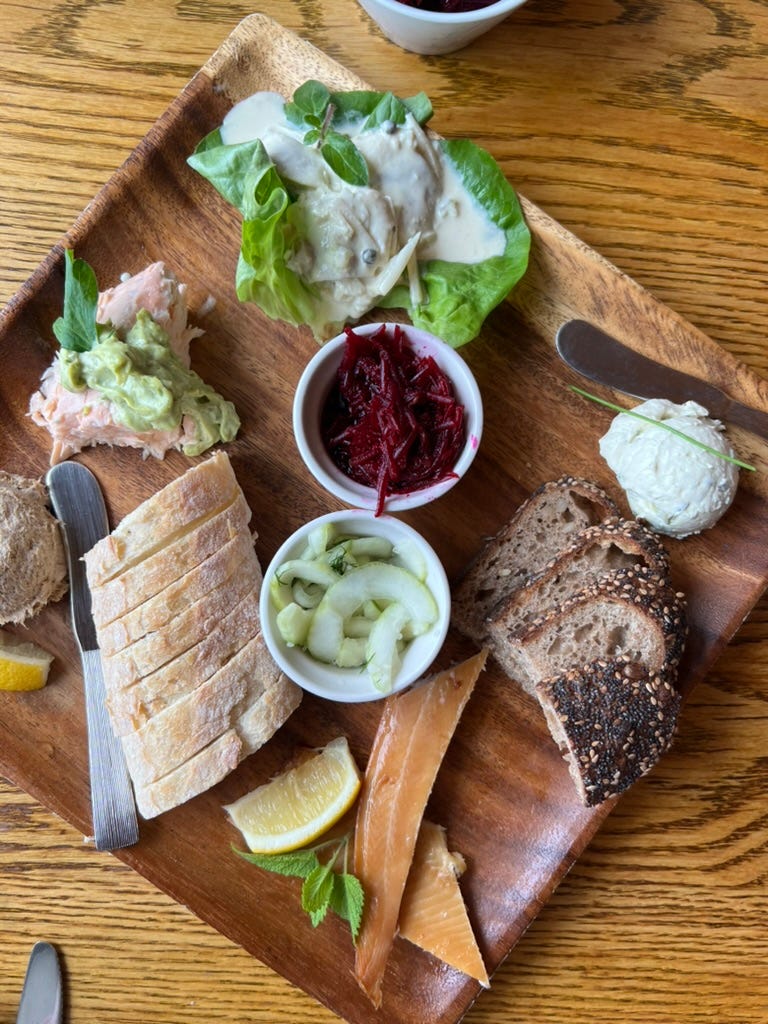

Wonderful post. Thank you Mitchell.
End of an era. Every meal at Dano’s is a wonderful memory of mine. From the bistro, to the Heiriger to the lovely wedding. Wish I could be there for the closing party.
I will be making spaetzle over the holidays! Please write a cookbook with Karen, even if it's a small one devoted to her baking.